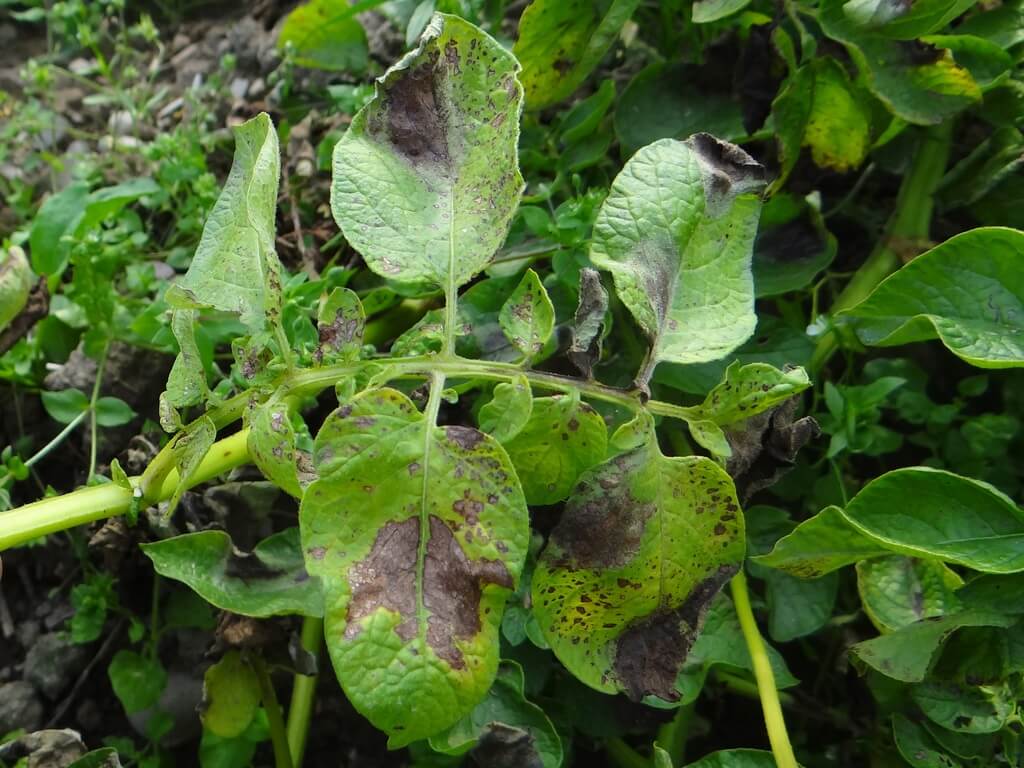Kenya’s potato production has shrunk from 22.4 tons per hectare in 2008 to just 8.4 t/ha in 2022. This is four times lower than the country’s 30 to 40 t/ha production potential. The main culprit for this has been one fungal disease; potato late blight
Almost all potato farmers in Kenya rely solely on synthetic pesticides to control late blight. Of these farmers, 66 per cent use only one pesticide type to control the disease. This has encouraged the disease’s resistance making an already bad situation even worse.
The current and future impacts of this on the county’s food and nutrition security as well as the livelihoods of small-holder farmers could be catastrophic.
Potatoes are Kenya’s most important staple food after maize. They are an ideal food source because they have a high nutritional value, are bulky relative to their growing area, and have a short maturity period.
Related News: Four diseases decrease Kenya’s potato yield 62%, decimating food security
Related News: Molo farmer intercrops potatoes and peas, to earn all year round
They contribute up to Sh50 billion to the Kenyan economy annually and are produced almost exclusively by farmers with 1 hectare of land or less who depend on the tuber for their income and food security.
According to a survey of Nyandarua potato farmers— the country’s leading potato producers– 84 per cent identified late blight as the main cause of potato yield losses. The fungi regularly caused losses of 30 to 60 per cent. This jumps to 100 per cent if it is not controlled.
Most farmers grow the Shangi potato variety which is classified as moderately susceptible to potato late blight. This is because it has a ready market, high yields, readily available seeds, and early maturity as compared to late blight-resistant varieties such as Asante and Tigoni.
The report found; “Fungicide application frequency by farmers can go up three times in one week during the wet season. This is because late blight thrives in cooler conditions, 43 per cent of potato farmers apply fungicides once a week, 21 per cent twice a week, and 3.8 per cent thrice a week.
Related News: Potato research center introduces late blight resistant CIP-Matilde
Kenya’s main potato growing hubs; particularly in Kinangop, have high relative humidity and low temperatures, which have ideal environmental conditions for the fungi.
There are three active ingredients used to control late blight; Cymoxanil, Mancozeb, and Metalaxyl. Only 34 per cent of potato growers reported alternating between these different fungicides.
To avoid the development of late-blight resistance farmers are advised to rotate these pesticides with different active agents not just different label names.
This ensures that the spores used in reproduction by fungi that are resistant to one fungicide-active ingredient are killed by another.
Despite a substantial number of farmers being aware of biological and integrated disease management strategies, none of the farmers used any biological product to manage potato late blight. This is due to their lack of proven effectiveness and costliness in terms of investment in research time and potential yield losses.
